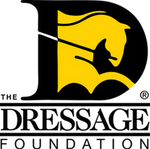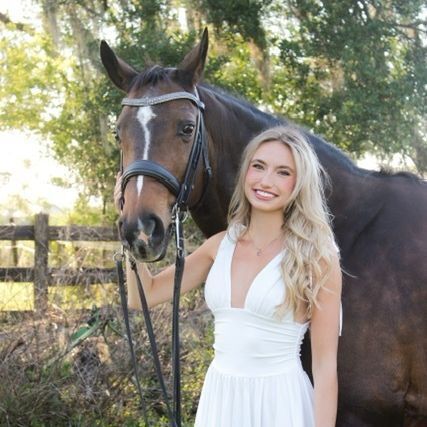
I am so excited for this incredible opportunity to expand my knowledge of the sport I love with the best in the industry. I can't wait to listen to a variety of theories, ideas, and techniques that I can integrate into my own training and continue to pursue my dreams. Thank you to The Dressage Foundation and its generous donors for providing me with this wonderful experience!
Jillian's Day 1 Journal:
With Adrienne Lyle:
Adrienne said they teach the baby horses to learn how to learn. They don’t necessarily train in the ring four days a week, but they’ll do ground work and let them learn things like standing on a horse pedestal.
The walk is so important. She has training rides where they only walk each week (not on the babies because they would get frustrated) but even on her Grand Prix horses.
If a horse breaks into the canter, if they don’t come right back to trot, rather than continuously trying to bring them back down, instead push them forward in the canter. Make sure they’re in front of your leg so they don’t learn that breaking gaits becomes a time to slow down.
My overall take away from Adrienne was to approach things slow and methodical and to always keep the hind legs jumping/active — when the small tour horses were lagging in walk pirouettes or half passes, she would turn them into half step or piaffe pirouettes.
Adrienne believes in a lot of small leg yielding in general, but especially in the passage so you aren’t just driving to the bit and the horse is dropping its back and bracing.
Always ask other professionals for additional help — each professional has their niche or specialty, and they can help you with small things like presentation at shows at the young horse levels, etc.
Make a long-term goal and choose the path that gets you to that goal — not every young horse is meant for the young horse classes, but that doesn’t mean they won’t be a wonderful Grand Prix horse someday.
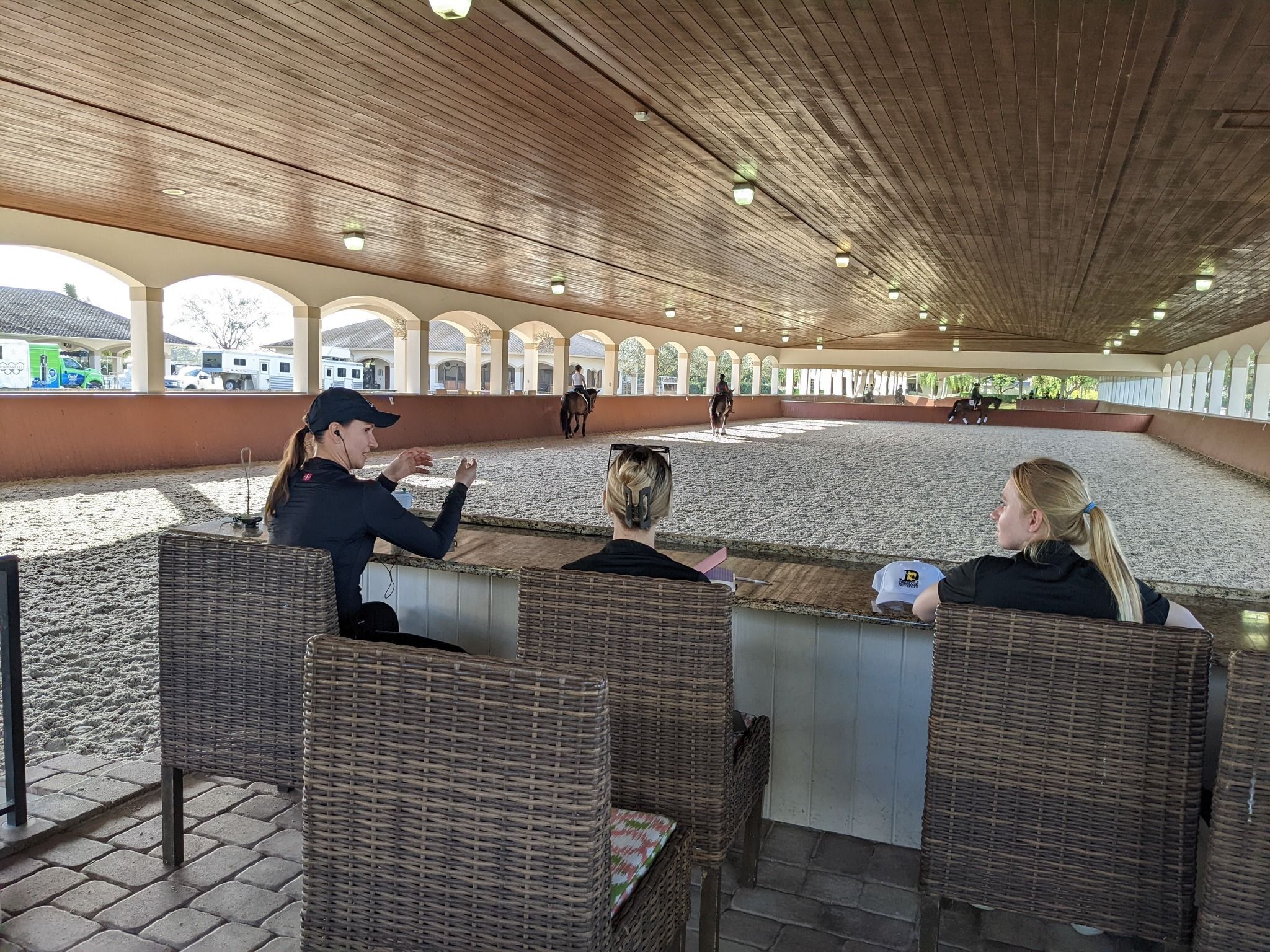
Learning from Adrienne Lyle
Long-Lining Demonstration with Kathy Connelly:
Long-lining allows you to train what Kathy calls “the balancing box.” It is where the vertical axis of the rider intersects with the horizontal axis point of the horse.
You can also implement the training scale and apply Kathy’s synopsis of it: “1. Is my horse forward/off my leg? 2. Is my horse straight? 3. Is my horse listening to half-halts?”
- Long lining is a great tool to teach piaffe because it takes away the struggles that you face under saddle
- Kathy did a lot of desensitizing with her hands before using the whip on the horse and waited for his skin to not twitch
- She also uses lots of pressure points on the horse to help him stretch and loosen up his poll before the work
- She does “bounce whip” so you have a retraction in your wrist when you use the whip, don’t just “thwack”
- Make sure to use your visual, auditory and tactile aids because horses learn from all three
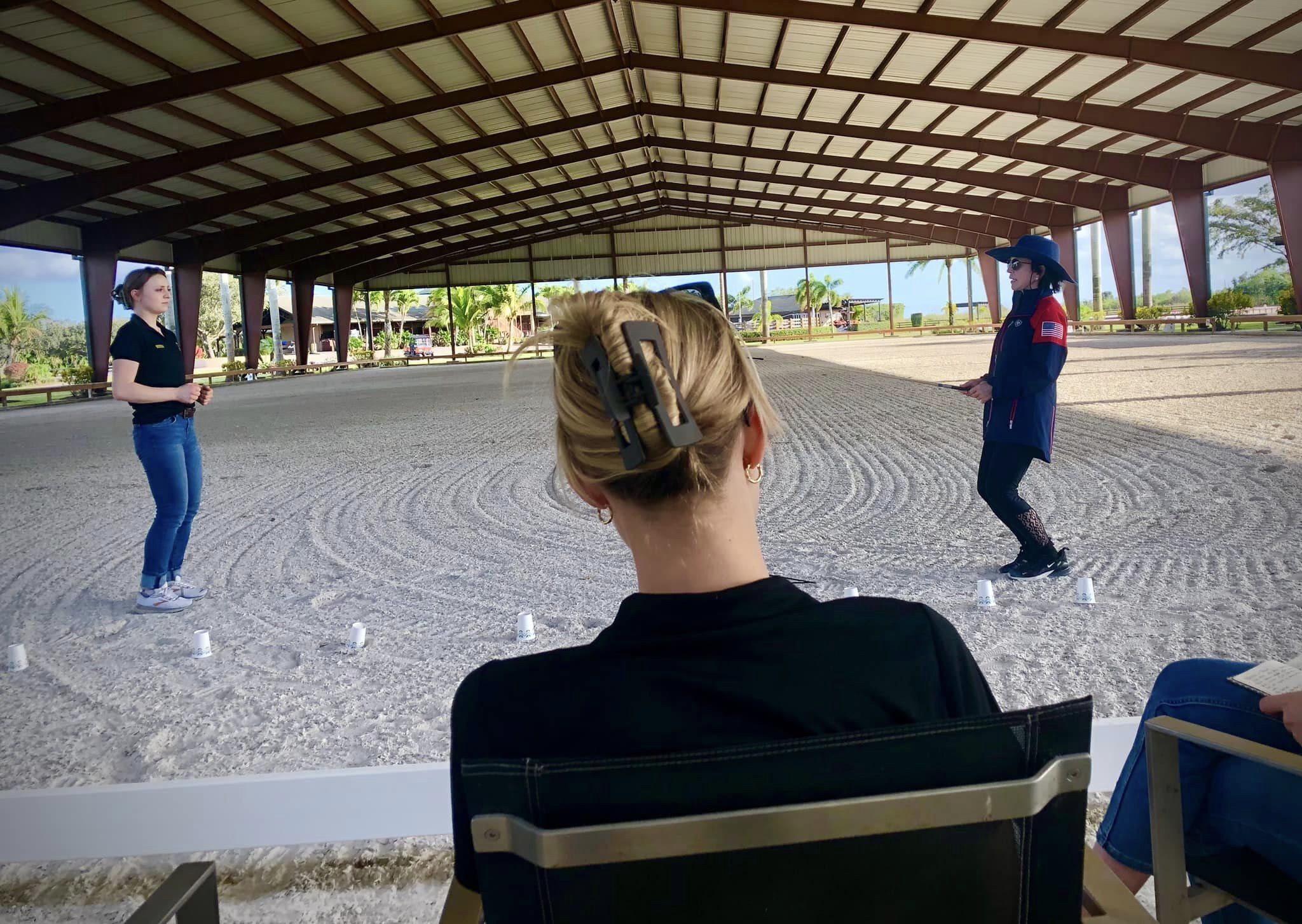
Demonstration with Kathy Connelly
Conversations with Owners/Sponsors:
Betsy Juliano:
- Syndicates can be amazing but establish everything in the contract so there is no confusion.
- It is much better if your sponsor is investing because they love the sport and find it fun to be involved, not as a way for them to make money. There is less pressure.
- “You don't have to reinvent the wheel.”
Margaret Duprey:
- It's best if the rider is able to make decisions for the horse and the sponsor really trusts them as a horse person.
- Emphasized clear communication.
Jillian's Day 2 Journal:
Main takeaways from JJ Tate:
- “You’ve got to make an OK horse good, a good horse great, and a great horse fantastic.”
- You must truly approach each horse as an individual within the solid system.
- Three F’s: Free, Forward and flowing
- Free: He should feel unconstrained
- Forward: As a state of mind
- Flowing: Is he over the back, from my leg into the contact
- Being able to tune the dial:
- Can you bring the frame long or short?
- How small and big of a stride can you do (can I do this with long reins too?)?
- Ability to bend and go straight?
- Finding the common denominator:
- Everything shows up in the basics.
- Where is this going wrong?
- Where is the biggest brace point?
- Organize your program around this.
- Building the reserve tank is essential to getting full capacity at shows and then you can have a “spending spree” at shows. At home build the horse and “put $ in the bank.”
- “We don't put the horse on the bit, we put them in the situation to put themselves on the bit.”
- Become leg to eye coordinated or seat to eye coordinated, not hand to eye coordinated.
- “The arch of the horse is a rainbow, and the bit is a pot of gold”
- Though there are no jumps or obstacles in in dressage, we still have to teach them to coil behind.
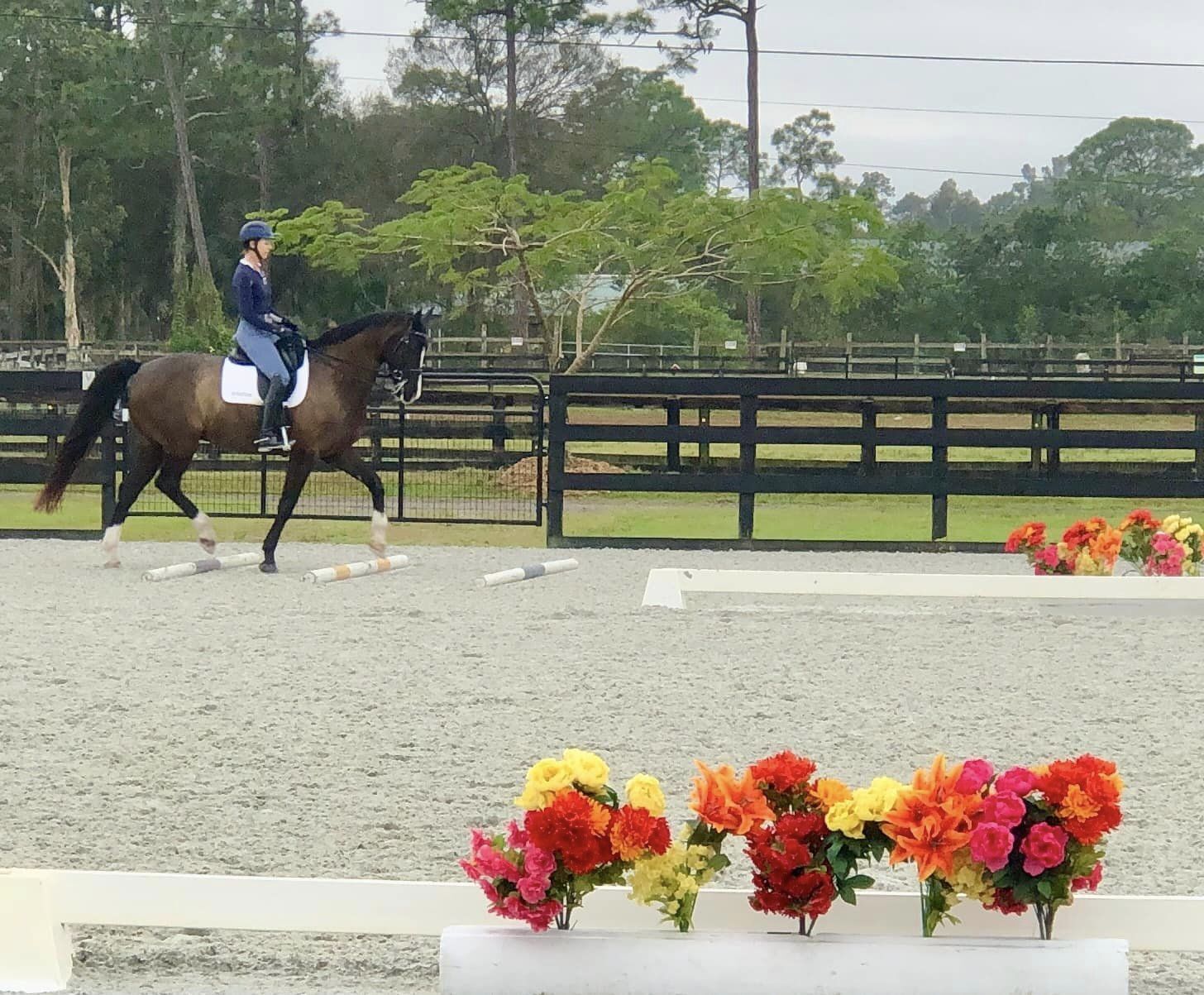
JJ Tate
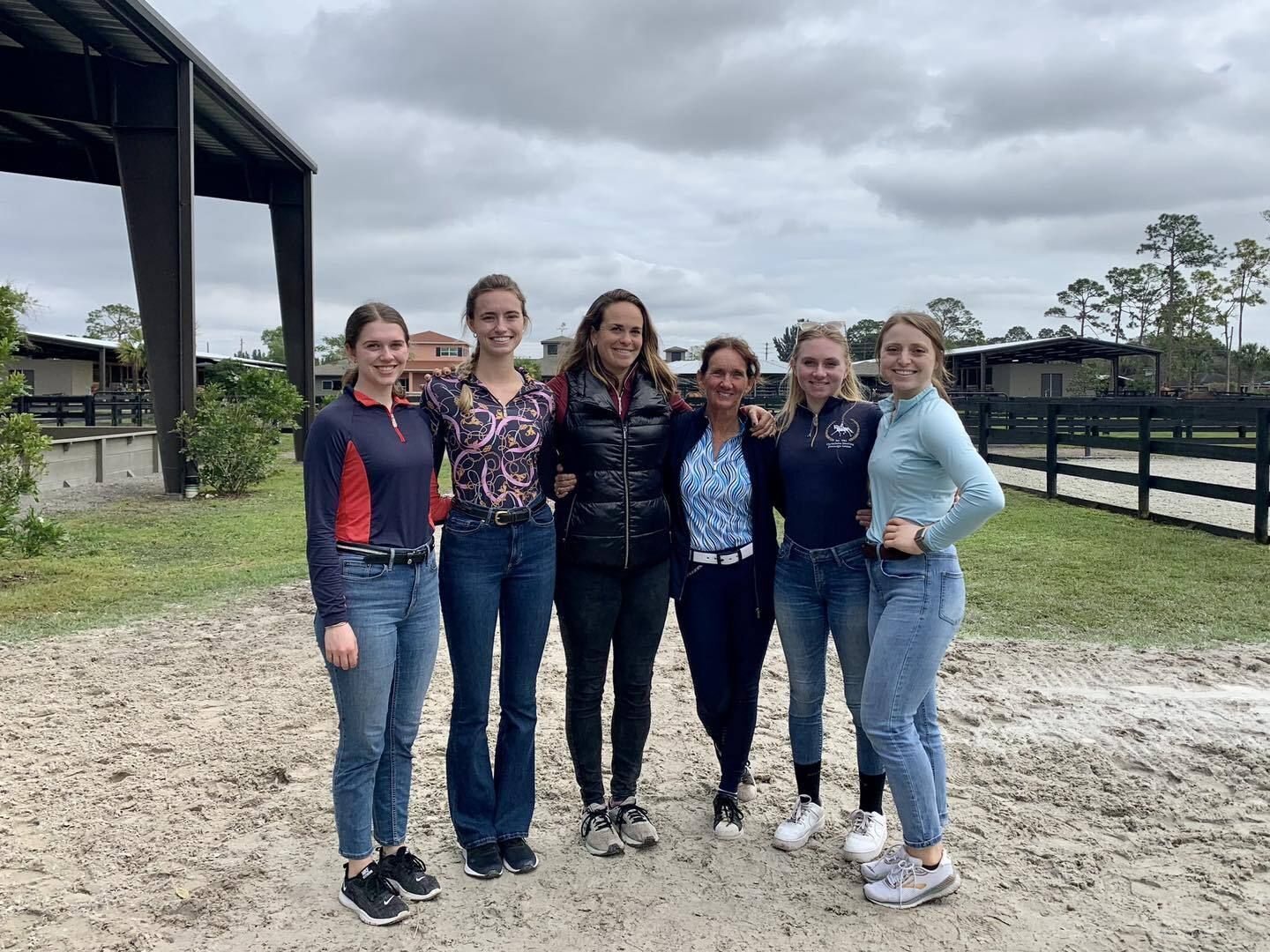
With Jane Cleveland, owner of Poinciana Farm
From Dr. Hilary Clayton:
- Polo wraps are not really effective and actually trap heat. When polo wraps are on, the tendon can measure 45 degrees at the center which is hot enough to kill cells.
- Real sheepskin is the best half pad because it is the only thing that molds to the horse's back and gets the saddle to fit him correctly.
- Horses are meant to constantly be putting pressure and taking off pressure on their legs thus turnout is so essential to keep them sound.
- Carrot stretches are very effective, she saw results in just six weeks from doing carrot stretches daily in their muscle growth.
- Riding horses on different footing is very effective as it forces the horse to be very aware of their footfall.
From Katie Foster:
Don't say no because something is different. It may lead to more business and a new niche you never knew you would like.
Jillian's Day 3 Journal
From Ali Brock:
- Say yes to opportunities
- Set standards for yourself - don't sacrifice your goals for anyone else
- Every decision you make leads you to new opportunities
- Have grit, know you’ll have to work really hard
- Find your niche--what really is your passion in this sport--and work towards it
From Charlotte Bredahl:
- Talked about developing program and the jump to pre-elite
- For her, the relationship with the trainer is almost more important than with the rider, so make sure you have a trainer who will work well the team coaches
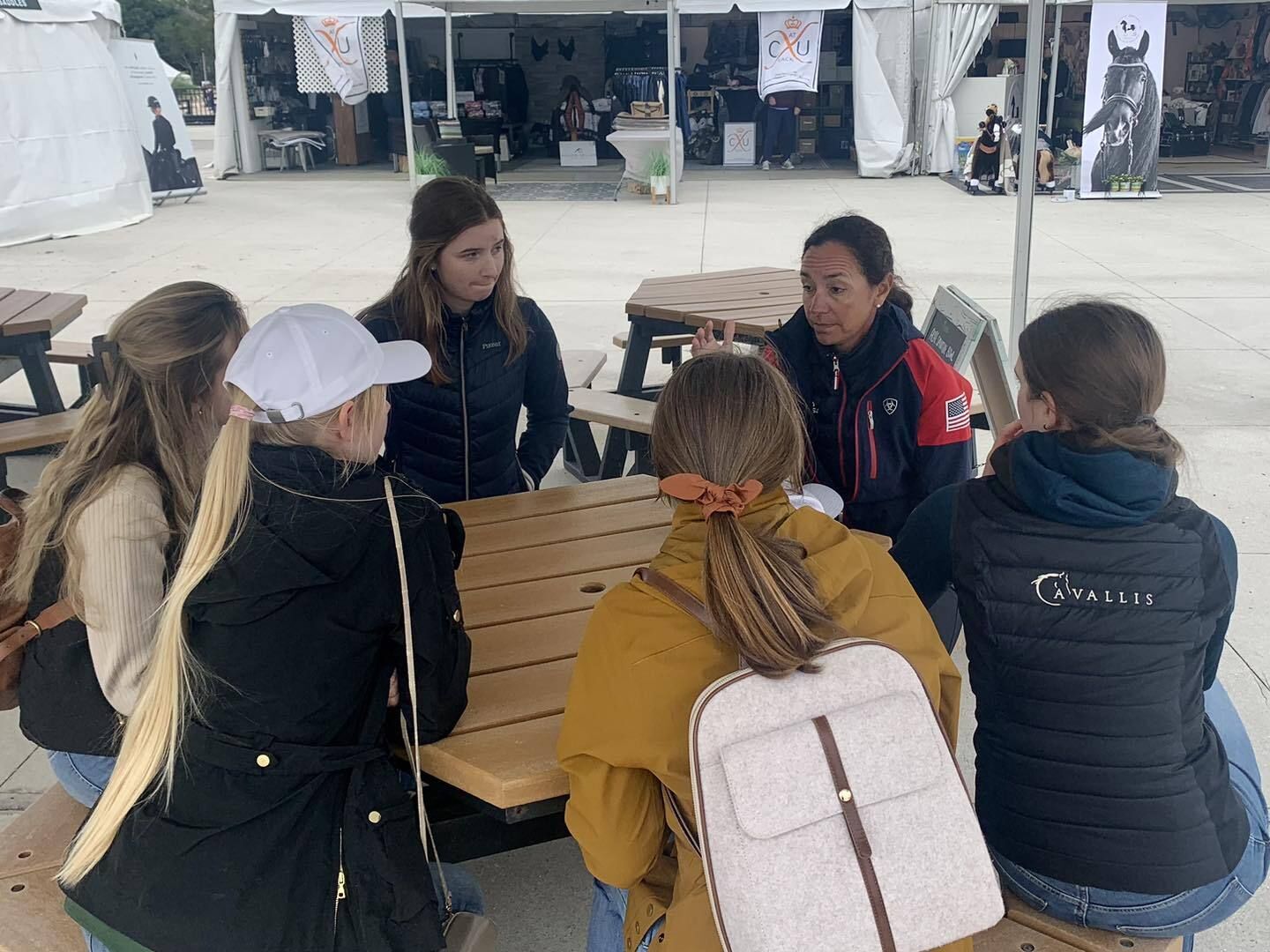
Getting advice from Olympian Ali Brock
Jillian's Day 4 Journal
Jennifer Williams and Oded Shimoni:
- Use lengthening of the reins as a reward throughout ride but make sure they don’t lose energy behind
- If you relax your horse should be ready and ask how much power or how forward do you want, they shouldn’t quit and if they do make a quick correction
- You don’t want to be muscling a horse and have to spur it around a whole test, so train them to be hot off your aids so you can ask like a 1 (scale of 1-10 in volume of your aid) and they’ll respond right away
- Horse should be self-propelled - Oded Shimoni
- “When I put my heels on, I feel their hocks into my hands.”
- Groundwork can be so helpful, especially with really challenging and physically hard horses
- “Submission into confidence”
- To start teaching collection that will eventually become the piaffe -- do a jog, start in the corners and think smaller stride, but do not drive. Let them fail and correct
- In-hand short rein --try to get 2-inch steps and when he gets behind touch him with the whip
- You don’t just want half-steps you want 2-inch steps in front
- Use some rein back in-hand to get him sitting and then get out and move forward
- You aren’t looking for height in hind legs, you’re looking for balance and coordination
- With young horses (4+) do the in-hand work too, but only do walks to halts. If you do it right eventually they will offer piaffe
- Syndicates are a great way to get a sponsored horse without a sponsor. You can offer your training for free in exchange for a percentage of the ownership
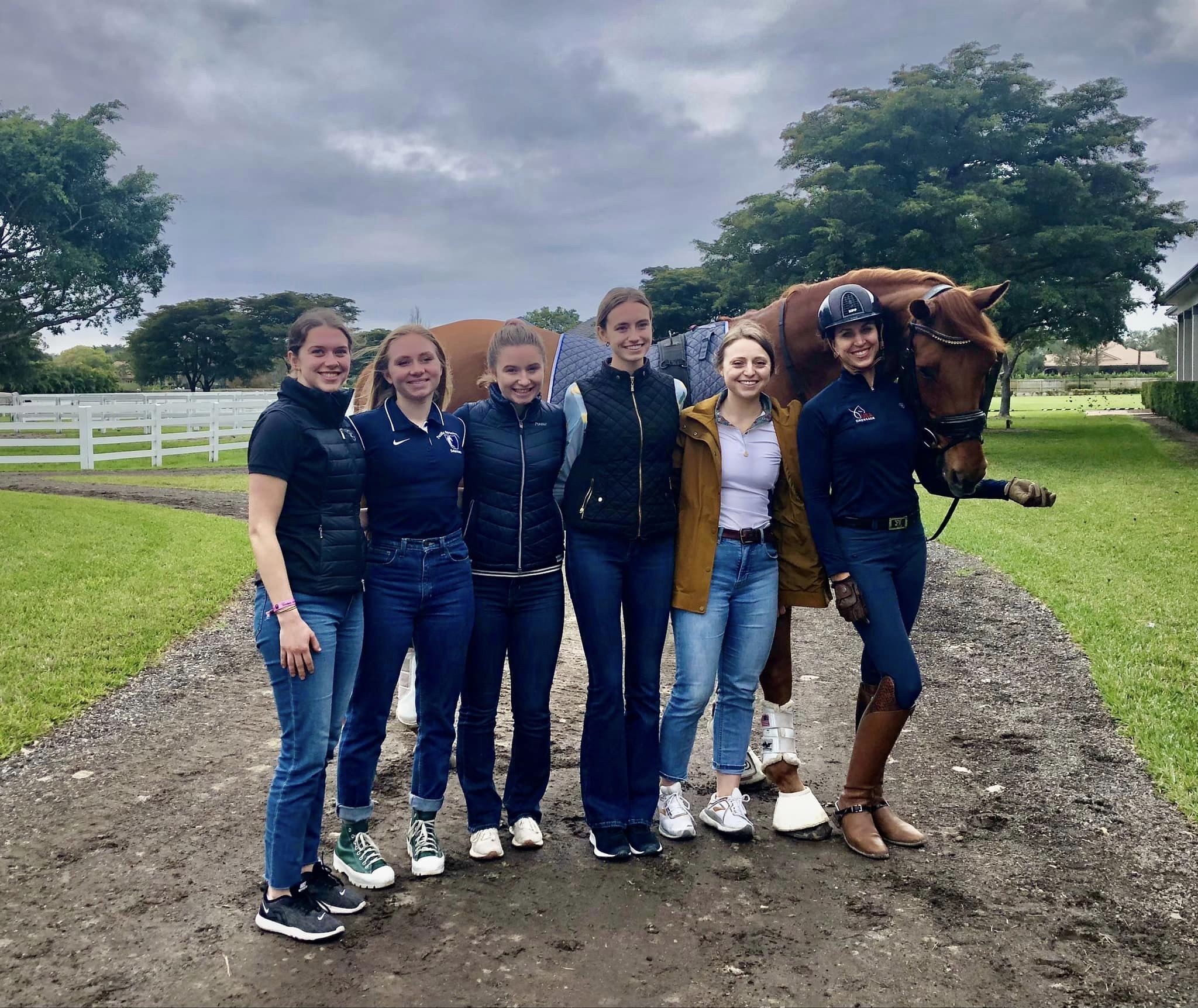
With Jennifer Williams
Jillian's Wrap-Up
The Dream Program is very appropriately named, as it truly was a dream. Each day was filled with immersive learning experiences at some of the top riding facilities in the nation. We learned training tips and tricks from numerous international riders while also learning the ins and outs of sponsorships, running a facility, judging, long-lining, and biomechanics. I am so grateful that I had this opportunity and recommend it to any young rider or professional to apply!
